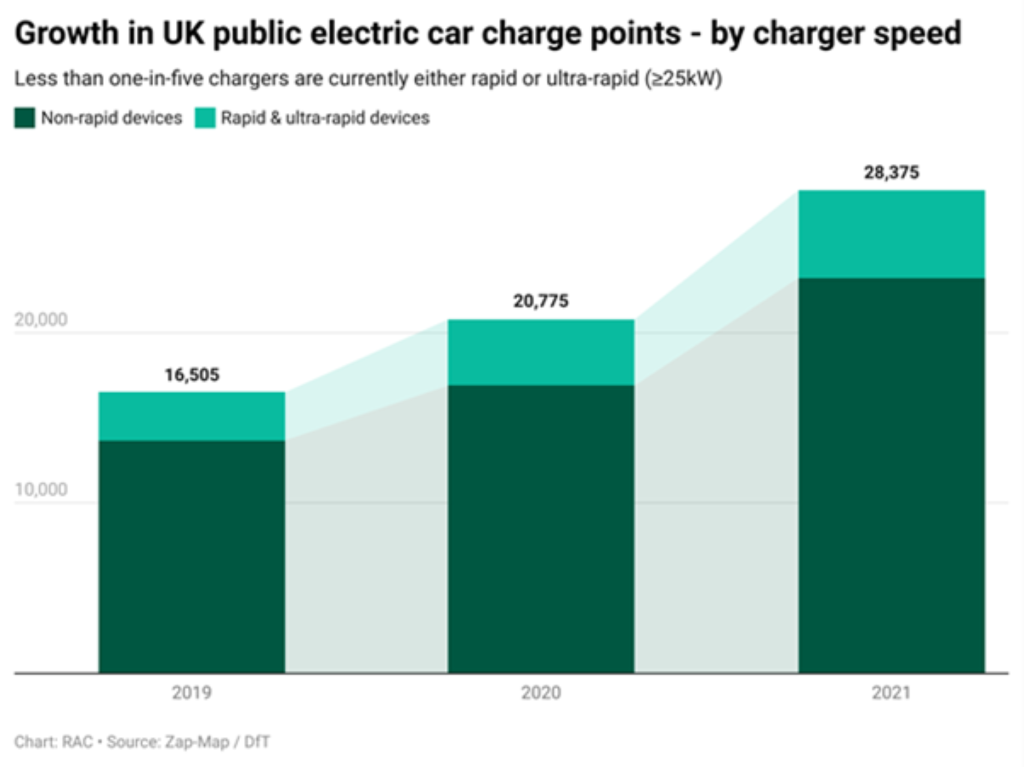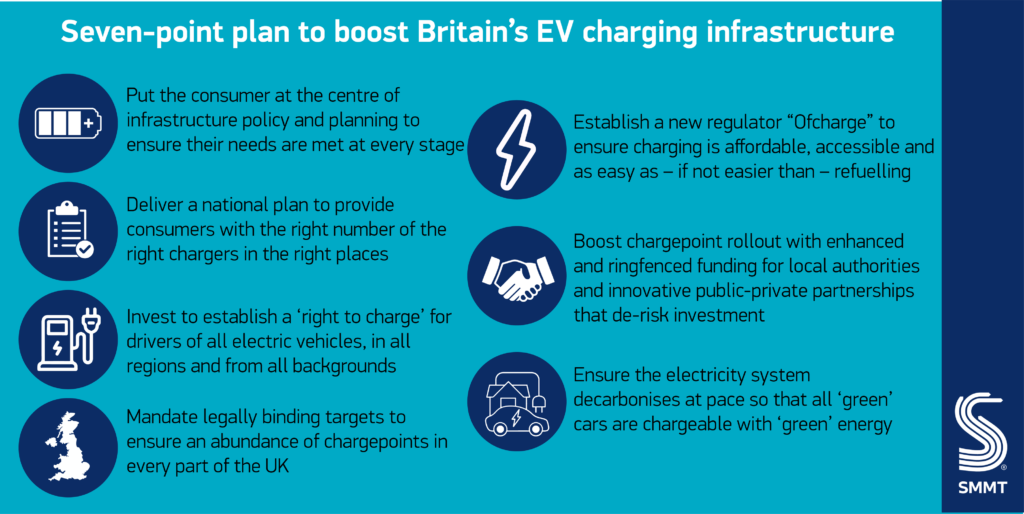New Electric Vehicle 350kW High-Power Charging Hub Opens In Wales
Friday, 29. April 2022
Wales’ first high-powered electric vehicle (EV) charging hub has opened in Swansea as part of Gridserve and Moto’s UK-wide roll out of charging infrastructure.
The Electric Hub, part of the Gridserve Electric Highway has six 350kW high-power EV charge points, with the ability to add a further six charge points when required.
Toddington Harper, CEO of Gridserve, said: “This is a landmark project for Gridserve and Moto and the first high-power charging facility of its kind for Wales.
“We’re really excited to be demonstrating that all parts of the UK should be able to embrace the EV revolution.”
The launch comes in the wake of a proposal from the Society of Motor Manufacturers and Traders (SMMT), for a new regulator called Ofcharge to govern targets and ensure every part of the country has accessible, available and affordable charging for their EV.
Part of a new seven-point plan, published yesterday (Wednesday, February 15) by the SMMT, the automotive trade body says that, while most current plug-in car drivers charge at home, public charge points remain critical to consumer confidence and are still relied upon by many fleets, as well as the third of British households that do not have designated off-street parking.
Harper said: “We cannot let a lack of infrastructure prevent drivers from realising the myriad of benefits that come with driving an electric vehicle.
“This project will help deliver the confidence for more people to make the switch to EVs, as well as support the growing number of people who already have.”
Lack of public charging infrastructure is a known barrier to EV adoption and has historically led to regional disparities in EV registrations.
Currently, Wales has one of the lowest numbers of EV charge points per head of population in the UK and Southwest Wales – where Gridserve’s Electric Hub is located – has just half the average proportion of EVs when compared to the rest of the UK.
Harper continued: “Thanks to partners like Moto, we are rapidly upgrading Britain’s motorway charging network and are prioritising areas of the UK that currently lack adequate charging infrastructure, by deploying more high-power Electric Hubs and Electric Forecourts.
“The Electric Hub at Moto Swansea is the first of many projects that we are aiming to deliver across Wales.”
Located at junction 47 on the M4 at Moto Swansea, All of the chargers at the new Swansea charging hub will be supplied with 100% net zero carbon energy from Gridserve’s solar farms, accept contactless payment and have the ability to deliver 100-miles of range in less than 10 minutes.
The Welsh government’s Electric Vehicle Charging Strategy for Wales commits to delivering 4,000 rapid chargers across the country over the next decade – of which just 3% are already installed.
Gridserve says it is looking at further sites in Wales for the development of future Electric Hubs and Electric Forecourts to help boost charging in the country and give people the confidence to make the switch to electric vehicles.
Ken McMeikan, CEO of Moto, said: “We are accelerating our ambition to open Ultra Rapid Charging Hubs at all of our Motorway Service Areas over the coming 12 months and are delighted with the progress that our partnership with Gridserve is making.
“We launched our first EV Hub with 24 Ultra Rapid chargers at Moto Rugby last year and EV drivers have loved it, we are super confident we’ll see the same level of success here at Moto Swansea.”
More than 20 Electric Hubs – each consisting of 6-12 x 350kW ultra high-power chargers – are due to open at motorway services across the UK by the end of Q2 2022, with large numbers of additional Electric Hub sites being lined up to follow, says Gridserve.
Since its acquisition of Ecotricity’s Electric Highway in June of last year, the company says it has already invested tens of millions of pounds in upgrading the network.
In addition to opening the first Electric Hub at Moto Rugby, the company has replaced more than 300 historical Ecotricity DC rapid chargers and has installed 130 additional AC chargers, ensuring that the charging needs for all types of electric vehicles are catered for.
Gridserve is also progressing plans to deliver more than 100 Electric Forecourts across the UK, with sites at Gatwick Airport and Norwich already in construction, and more sites in development.
Gridserve opened the UK’s first Electric Forecourt® close to Braintree, Essex in December 2020. By Graham Hill thanks to Fleet News
























